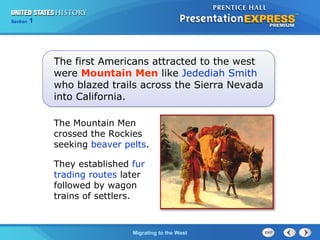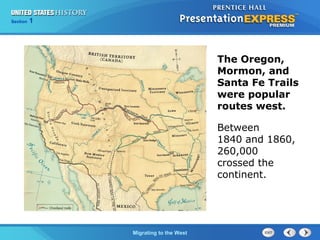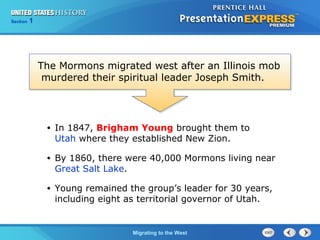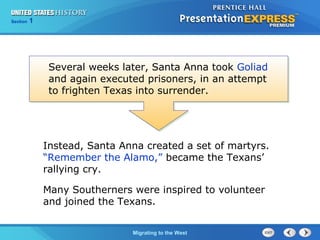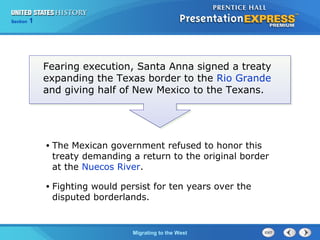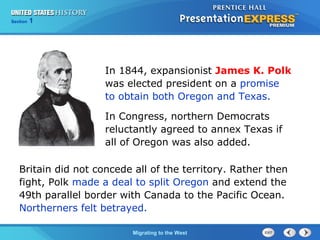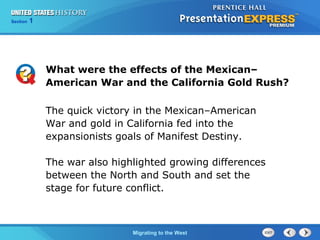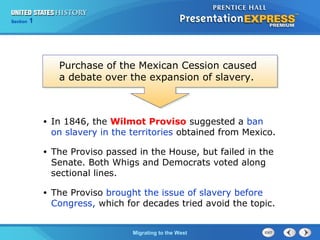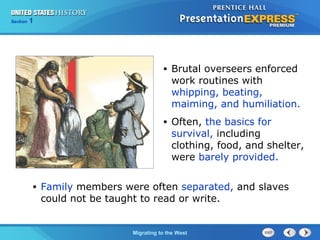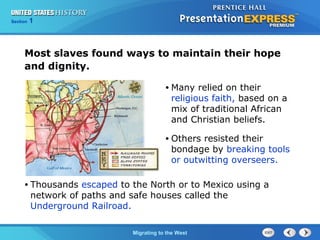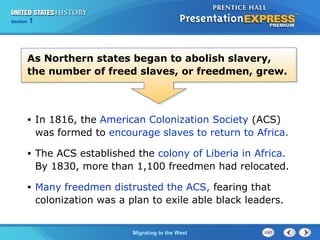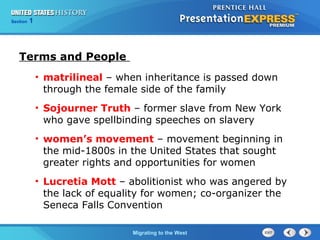The document provides information on westward expansion in the early 1800s in the United States. It discusses the migration of settlers along various trails like the Oregon Trail to destinations like California, Oregon, and Utah. The Mexican-American War is summarized, which resulted in Mexico ceding over half its territory in the southwest to the US in the Treaty of Guadalupe Hidalgo. The discovery of gold in California in 1848 touched off the Gold Rush, attracting thousands of prospectors. The rapid acquisition of new lands helped fulfill the concept of Manifest Destiny but also exacerbated tensions around the issue of expanding slavery.












